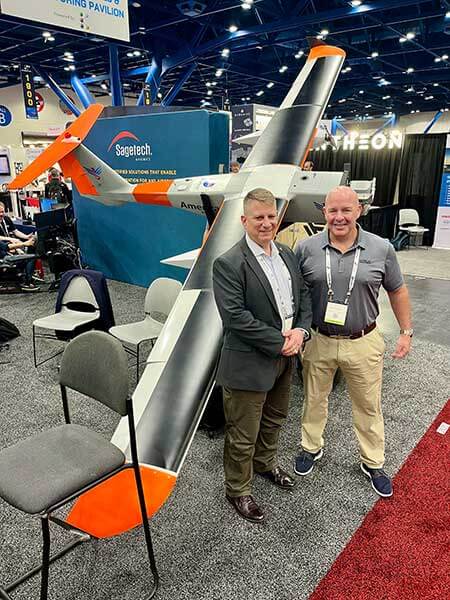By Charlton Evans, CEO, End State Solutions LLC
Here’s the deal about getting to market first in emerging aerospace technology. I’ve spent years watching emerging aerospace companies bang their heads against the regulatory wall, complaining about how impossible it is to navigate the FAA’s certification maze. They’re not wrong. It is brutal. The process is expensive, time-consuming and often feels like you’re speaking different languages with regulators who seem determined to slow down innovation.
But there is conciliatory language in the proposed Part 108 rule albeit with an open question: how do operators with existing BVLOS waivers and exemptions continue uninterrupted? Those approvals will transition into Part 108 frameworks once they expire. FAA guidance makes clear that oversight and transition management will occur throughout this process, with legacy waivers sunsetting on FAA-determined timelines. (See AG White Paper on the Part 108 NPRM here). As an example waivers approved under § 107.51 for altitude should be granted without delay or further negotiation as waivers under Part 108 in cases where they don’t fit the new rule language. The safety cases made to get the Part 107 approvals remain effective arguments for equivalent levels of safety under Part 108 as long as the limitations remain the same.
This only enhances the value of being first. The pathfinders who put in the work to secure waivers and exemptions today will still be positioned ahead, because they not only created revenue generating operations based on sound safety cases, but they also shaped the regulatory pathway the rest of the industry must follow. The “grandfathering” benefit isn’t perpetual exemption but rather a structured transition where first movers continue to operate with revenue and with more maturity when formal rules take hold.
The Grandfathering Reality
Grandfathering isn’t some mystical aerospace concept. It’s fundamental to how aviation safety works. It’s been the backbone of certification for decades. The principle is straightforward: if your product or operation was safe enough to earn approval under the standards of its day, it remains approved. Period.
This isn’t regulatory laziness or some loophole. It’s sound policy based on a simple truth: safety standards evolve, but they don’t invalidate previous good decisions. When the FAA, or any aviation authority, approved your technology under the certification basis available at the time, that approval was earned through rigorous analysis, testing and review. That process validated your safety case, so that validation endures.
New entrants? They face today’s rules. All of them. Every new requirement, every updated standard and every lesson learned from incidents that happened after you got your approval. You don’t.
Why First Movers Win
The arithmetic is simple. Every month you delay market entry while hoping for “better” regulations is another month your future competitors have to catch up, another month they have to learn from your pioneering work and another month closer they get to operating under the more stringent requirements that will inevitably come.
I’ve seen this play out repeatedly. The first company to achieve certification in a new technology category doesn’t just get a first-mover advantage in the market—they get a locked-in “regulatory opportunity” advantage. If the product is a market fit, they’ll be generating revenue and refining their operations, while late entrants have to wrestle with updated certification standards that reflect lessons learned from the first mover’s experience.
The FAA calls some of these early programs “pathfinders” for good reason. These aren’t just companies getting lucky with loose regulations. They’re organizations willing to invest in establishing the regulatory framework that everyone else will have to live with. The evidence of this success isn’t theoretical. It’s hanging in the Smithsonian.

The Real Cost of Waiting
The regulatory system isn’t going to get easier for complex aerospace technologies. It’s going to get harder. Every incident, every near-miss and every public concern about new aerospace technologies adds another layer to the approval process. The companies that understand this reality and move now position themselves for long-term competitive advantage.
The Investment Math
Yes, being first is expensive. Pathfinder programs require significant investment in regulatory engagement, testing, documentation and often multiple iterations with certification authorities. You’ll spend money on engineering analyses that future applicants will know they need upfront. You’ll fund test programs that establish the safety case for your entire technology category.
But here’s the return calculation that matters: once you clear that finish line, you own a regulatory position that becomes increasingly valuable as the market develops. While competitors are burning cash trying to meet newer, more stringent requirements, you’re generating revenue under your grandfathered approval.
This isn’t a short-term play. Aviation certifications can generate returns for decades. Commercial aircraft certified in the 1980s and 90s are still operating profitably today under their original type certificates. Operational approvals established twenty years ago still govern major airline procedures. The 44807 exemptions of today will be the operations approvals of tomorrow under 108.
Beyond the Approval
The advantage extends beyond the initial certification. First movers establish operational history, safety records and regulatory relationships that become competitive moats. They understand how to work within the system they helped create. They have institutional knowledge about what regulators actually care about versus what they say they care about.

More importantly, they’ve built organizations that know how to navigate certification processes. This expertise becomes invaluable when expanding operations, modifying systems or developing next-generation technologies. Late entrants have to build this capability from scratch while competing against companies that have years of experience working within established frameworks.
The Emerging Tech Disconnect
The emerging aerospace sector struggles with this concept because it’s populated by entrepreneurs and investors who come from industries where regulatory frameworks are more fluid. In software, you can update your way out of problems. In aerospace, the approval you get today may be the competitive advantage that sustains your business for the next two decades.
This creates a fundamental strategic choice: invest early in establishing your regulatory position, or spend years watching first movers capitalize on approvals that become increasingly difficult to replicate.
Why the System Works
Critics may characterize grandfathering as regulatory inertia, but they miss the point. Aviation safety is built on evolutionary, not revolutionary, change. The system validates new technologies against established safety standards, then protects those validations to encourage continued innovation.
Without grandfathering, aviation would be paralyzed by constant re-certification requirements every time standards evolved. Airlines couldn’t maintain fleets. Manufacturers couldn’t amortize development costs. Operators couldn’t build sustainable businesses around approved technologies.
The system isn’t broken. It’s working as designed to balance innovation with safety. For years there has been an imbalance. Part 108 seeks to rebalance and permit more innovation. But remember Part 108 was written 18-24 months ago, and approvals have evolved even in those couple of years.
The Strategic Reality
Here’s the uncomfortable truth for emerging aerospace companies: the regulatory process isn’t getting reformed to accommodate your timeline or your business model. The FAA isn’t going to suddenly become hyper-innovation friendly. The bar isn’t going to get lower.
The opportunity to be first in your technology category is finite. Every day you wait for perfect regulatory conditions is a day closer to being second, third or worse—irrelevant.
The companies that understand this reality and commit to the pathfinder investment aren’t just developing products. They’re establishing competitive positions that can generate returns for decades. The ones that keep waiting for easier regulations are building business plans around fantasy scenarios.
The Bottom Line
Grandfathering isn’t a loophole. It’s how aerospace works. It’s how the industry balances innovation with safety, how it encourages investment in new technologies and how it rewards companies willing to do the hard work of establishing new operational paradigms.
Now under Part 108, those legacy approvals will migrate, not linger. As such, critical questions remain:
- How exactly will the FAA manage waiver sunset timelines to avoid disruption or market distortions?
- Will all existing safety cases be fully recognized in Part 108 transitions, or will some operators find themselves duplicating work?
- How will transparency, consistency and fairness be maintained when legacy approvals phase out under FAA-determined discretion?
Even so, the competitive edge still goes to the pioneers — the companies bold enough to break ground early will enter Part 108 with hard-earned operational history, data, and regulator trust. Late entrants will face tougher requirements and start years behind.
The regulatory advantage still goes to companies bold enough to claim it.
This article represents the author’s views based on experience in aerospace certification and regulatory affairs.
About End State Solutions: End State Solutions certifies autonomy in aerospace for emerging technology aerospace companies by navigating the regulations to get to revenue operations. We achieve complex certifications with ESS’s winning team of seasoned professionals and proprietary tool sets. We help aerospace companies create commercially viable products and get into revenue service through certification and approvals with our winning team of seasoned professionals.

